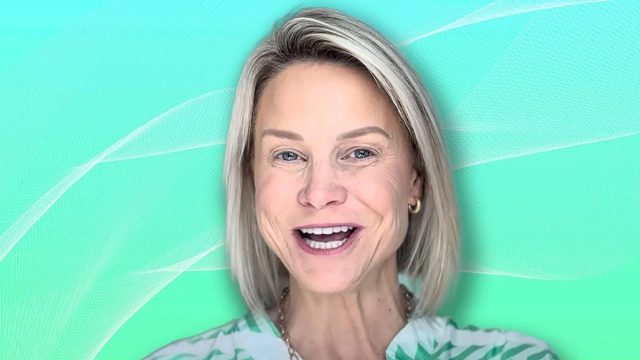The "10x Protein Trick" That Helps You Lose Fat, Not Muscle

"You can burn fat or find protein. The body cannot do both." These words from registered dietitian Amanda Nighbert highlight a common frustration: trying to increase protein intake while keeping calories low enough to lose weight. If you've ever found yourself going over your calorie limit while chasing protein goals, there's a surprisingly simple solution that could transform your approach.
With over 18 years of experience helping thousands achieve their weight loss goals, Amanda Nighbert has developed a straightforward method to optimize protein intake without breaking your calorie bank. Her practical approach has earned her trust in the fitness community, where she continues to share science-backed strategies that work in real life.
Why Your Body Needs Adequate Protein
"When you don't consume adequate amounts of protein, you essentially shut down fat metabolism," Amanda explains in her post. She emphasizes that protein isn't just another nutrient – it's essential because our bodies don't store it like other macronutrients. Without enough protein, your body shifts from burning fat to breaking down muscle tissue for protein, lowering your metabolic rate and making it harder to maintain weight loss.
Find Your Perfect Protein Target
Understanding your individual needs is crucial. Amanda recommends dividing your daily protein goal by three to find your per-meal target. Using herself as an example, she shares, "I need a minimum of 120 grams of protein a day, so I aim for 40, 40, 40." This ensures optimal protein absorption throughout the day, as your body can only process a certain amount at once.
The 10x Protein Trick Revealed
Here's Amanda's game-changing technique: Take the grams of protein in a serving and add a zero to the end. Compare this number to the total calories. "You want that new number with an added zero to be close to or over your calorie goal," she explains. For example, cottage cheese with 14 grams of protein and 80 calories becomes 140 versus 80 – a winning ratio for fat loss.
Avoid These Protein Pitfalls
Not all protein sources are created equal. Amanda warns about protein bars that might seem healthy but aren't optimal for weight loss. She demonstrates how a bar with 10 grams of protein and 210 calories would require eating three bars – almost 700 calories – to get 30 grams of protein. Compare this to lean protein sources that provide the same protein for just 160 calories.
RELATED: Trainer Reveals the 60-20-20 Rowing Secret That Builds Full-Body Muscle
Smart Protein Swaps
Using canned chicken as an example, Amanda shows how 18 grams of protein for 90 calories follows the 10x rule perfectly (180 vs 90). This means you can get nearly 40 grams of protein for about 200 calories – a far more efficient choice for staying in a caloric deficit.
The Egg Strategy
While eggs are nutritious, Amanda suggests a strategic approach. "Five whole eggs provide 30 grams of protein but cost you 420 calories," she notes. Her solution? Use a two-to-one ratio of egg whites to whole eggs, providing the same protein for just 160 calories while retaining some of the whole egg benefits.
RELATED: Coach Lost "Postpartum Pooch" by Eating These 5 High Protein Meals
The Truth About Plant Proteins
"Peanut butter is often praised as a protein source, but it's primarily a fat source," Amanda clarifies. She demonstrates that getting 30 grams of protein from peanut butter would require consuming about 800 calories – not ideal for weight loss goals.
Choose Your Protein Sources Wisely
For successful fat loss, Amanda recommends leaner protein sources: opt for 90/10 or 92/8 ground beef instead of 80/20, choose chicken breast over dark meat, and select the leanest ground poultry options. "When they take out the fat, you ultimately also get more protein," she explains.
Put the 10x Trick Into Practice
Success comes from consistently applying this simple math. Use the 10x trick while shopping, compare protein-to-calorie ratios, and always consider how many calories it takes to reach your target protein intake from each source. This approach makes it easier to stay within your caloric deficit while meeting your protein goals.
RELATED: Weight Loss Dietician Used to Be Overweight Until She Eliminated These 5 Foods
Your Action Plan
https://www.instagram.com/reel/C5WSSv7u9fC/?utm_source=ig_embed&utm_campaign=loading
Start by calculating your daily protein needs and breaking them into per-meal targets. Then, use the 10x trick to evaluate your current protein sources and gradually replace high-calorie options with more efficient choices. Remember, successful fat loss comes from maintaining adequate protein intake while staying in a caloric deficit – and now you have the tool to make it work. And if you enjoyed this article, don't miss I'm a Nutritionist and Here Are 25 Weight Loss Truths You Need to Hear.




